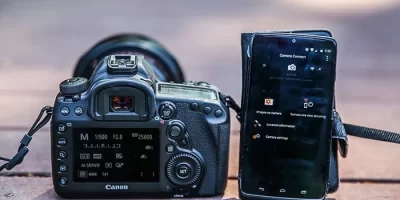Imagine you had the chance to speak to Canon and ask them questions based on their latest and greatest. Well, imagine no more. GA’s got you covered. We managed to speak to Canons’ Central and North Africa Sales and Marketing Director, Amine Djouahra.
He gave us a lot of insight into the Canon EOS R5 and R6, what 8K really means for the future and how much people spend on Cameras in Africa.
Interview with Canon
Do people in Kenya/Africa actually spend $4000 on Canon cameras?
Amine: When people invest in the best technology that money can buy, they expect to get exceptional quality. The all-new EOS R5 and R6 cameras are advanced full-frame mirrorless cameras.
More about the EOS R5 and R6 Here
With that in mind, Africa, in general, has been an exciting market for Canon. We have grown ever since we have been doing business in the region. Kenya is, in fact, one of our key markets. We have pioneered initiatives in this market that we expanded to other African markets such as the hugely successful Canon Discovery Week.
These initiatives give Canon an opportunity to help our customer gain more value from their equipment. Here, we share our knowledge with our customers so they can do more with their Canon equipment.
For Canon, we also learn more about what our customers truly desire and use these insights for our R&D which is why we continue to be the global imaging leader.


In your opinion, if I can get an 8K, 45 megapixel camera for $4000, why should I spend $6000 of the 1DX Mark II?
Both cameras are incredible and deliver consistently on demanding expectations from the market. Each camera was developed using feedback from the market prior to being launched.
What the EOS R5 represents is another highly dependable option with added capabilities. We believe we have merely expanded the range of solutions available to professionals.
When can we expect the camera to come to Kenya?
We are working to have the camera available in Kenya by September 2020. We did however arrange for two of Kenyan photographers to use the EOS R5.
The feedback as shared in the Reimagine session along with other photographers from Nigeria and Morocco, was very exciting. We anticipate that the market will be as receptive as the African photographers.
Is Canon supporting other photographers in Kenya? Maybe classes, summits etc.?
We have the
- Miraisha initiative that supports the Canon Academy. Here we host regular sessions with various partners to develop skills of African youth in imaging.
- We also recently added a digital portal called Canon Connected. This is one of the ways in which we help develop the industry by sharing knowledge. Canon Ambassadors and other renowned photographers and filmmakers have recorded sessions where they share their skills to help people improve their skills.
- On August 12th 2020, we premiered the Canon Tech Talk Series. This is a new webinar series featuring 45 different lessons in English, French and Arabic. The first episode was led by Nigerian Producer/Director Kunle Afolayan.
What makes Canon stand out against the competition?
Canon cameras are developed from the feedback from the market. It allows us to understand and appreciate better the experience of a broad cross section of photographers and videographers.
Each year we invest 8% of our revenues in R&D, pushing the boundaries in technology and innovation.
There’s very little 8K content /8K capable screens/devices. Why the early jump?
Admittedly, the recent times have encouraged the world to innovate faster. Meanwhile we always have one eye on the next five years and the other eye even farther beyond.
For example, when we launched the first digital EOS camera in 2003 (retailing for under €1000), it was the first camera to use the CMOS sensor. We are committed for the long term, and we have been the driving force in determining the technology direction.
There have been complaints from some of the testers. They say that the 8K camera can get hot while doing all that massive work. Is there something you are working on to try and reduce this?
Exactly as you have highlighted, the camera may experience an increase in temperature. Especially when working at its highest possible speck for an extended period of time.
While there are rare situations where the camera will be utilized under those conditions, we have designed a mechanical countermeasure. The camera body (internal chassis) is made of magnesium metal to disperse heat throughout the camera.
Electronically we also have an Overheat control setting. Once this setting is engaged the display frame rate is temporarily changed during movie shooting standby. It will reduce power consumption and generation of heat.





Comments